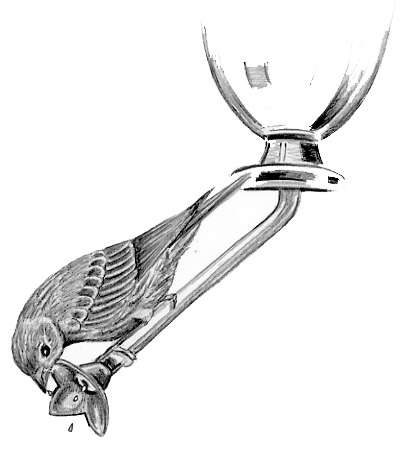
Dear Bird Folks,
I have enjoyed reading bird questions and answers on your website. I am wondering if anyone has e-mailed you about House Finches trying to feed from hummingbird feeders. What’s up with these crazy birds? Do they not know what species they are? Do they really like to eat nectar?
– Tanya, Lancaster, KY
Our what, Tanya?
Did you say you read us on our “website”? We have a website? Really? I think I had better look into this. (click, click) Hey, what do you know! We do have one. When did that happen? And check out my picture. Wow! I sure am one handsome-looking fellow. No, wait. I mistakenly clicked on Richard Gere’s website. That’s not me at all. Oh, well. I’ll look for our website later. Right now I have to write about nectar-eating House Finches. Ha! I’d like to see pretty boy Richard Gere do that.
As most of you know by now, House Finches were originally a Western bird. They were illegally transported to Long Island back in the 1940s. It was probably California’s way of getting even for all those New Yorkers moving west. House Finches are amazingly adaptable birds and instantly established themselves in their new Northeast home. Not long after the birds became established, they began to expand their range, gradually pushing their population further south and west.
Like the Transcontinental Railroad, the eastern birds slowly expanded west until they joined up with the western House Finches, forming one countrywide population. Only, instead of commemorating the event by driving a golden spike into the ground in Promontory Summit, Utah, the House Finch continental crossing was noted by the placement of a green plastic bird feeder in Agnes Hickman’s backyard, in Beaver City, Nebraska. It was a simple ceremony. So simple that only Agnes and I know about it.
As is the case with most finches, the House Finch is fond of just about any kind of seed it can find. When it arrived in the East and discovered the abundance of feeders, the bird must have thought it hit the winning lottery number. For a while, House Finches were so relentless at feeders that some people considered them to be a problem. The western finches, on the other hand, may not have been a problem on feeders, but they were (and are) a problem for fruit farmers. House Finches apparently have a sweet tooth, which is ironic in itself since they don’t have teeth. They do, however, like to snack on both whole fruit in the fall and fruit blossoms in the spring.
House Finches will descend on a flowering cherry tree and chow on the blossoms. Oddly, after the bird nibbles on a blossom for a bit, it suddenly drops the flower and has no more use for it. It is thought that the birds aren’t eating the blossoms at all but are squeezing out a small amount of nectar. Once the sweet nectar has been squeezed from the blossom, the birds quickly spit it out, much in the same way we spit out sugarless gum after about five chews.
With their love of nectar in mind, Tanya, the question shouldn’t be: “Why are the House Finches eating at my hummingbird feeder?” Instead it should be: “Why aren’t they lining up to eat from everybody’s hummer feeder?” Finches like to eat from our feeders and they like nectar. So, why aren’t they fighting with the hummingbirds at the nectar feeder?
Well, to begin with, nectar feeders aren’t built with finches in mind and finches aren’t built with nectar feeders in mind. Finches can’t hover like hummingbirds can and their stubby beaks are way too short to reach the nectar. It would seem that finches are no more equipped to eat from a hummingbird feeder than I am equipped to be on Dancing With the Stars. Yet, occasionally some birds figure it out and when they do, other finches copy them and the nectar-fest is on.
In addition to House Finches, a surprising number of other birds have been seen eating at nectar feeders. Tanagers, woodpeckers, kinglets, catbirds, and chickadees have all been hummingbird wannabes. But none have quite mastered the art like the orioles have. It wasn’t that many years ago when none of us had ever heard of a nectar feeder designed just for orioles, but the birds’ aggressive persistence at hummingbird feeders (ripping off the plastic flowers and bee guards to get at the nectar) has forced companies to build feeders specifically for the bright orange birds. And when I say “forced,” I mean the companies quickly slapped something together in an effort to make more money.
So far, Tanya, even though House Finches do eat at nectar feeders in some locations, they haven’t dominated them throughout their range like the orioles have. Perhaps that day will come but probably not for a long while. The way I hear it, what happens in Lancaster, KY, stays in Lancaster, KY. And that seems to be an appropriate slogan because this is the first time I’ve ever heard of Lancaster, KY.